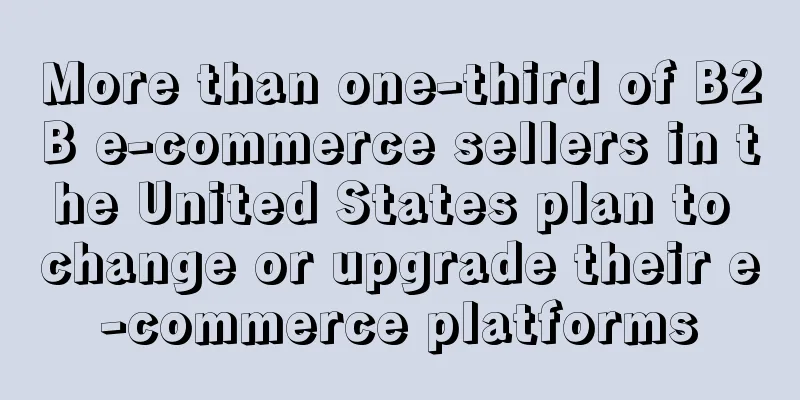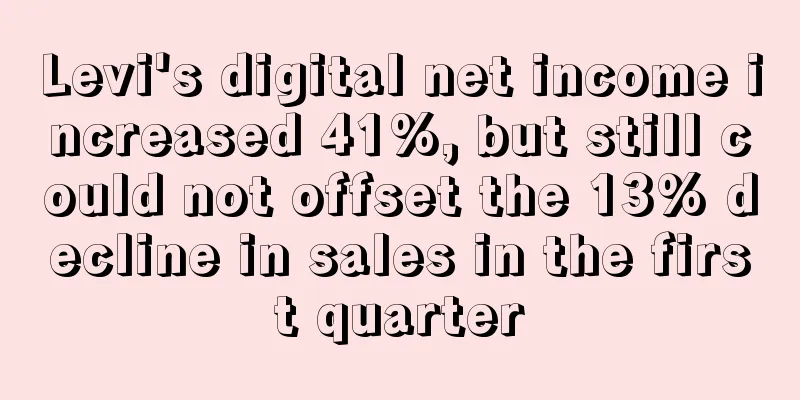More than one-third of B2B e-commerce sellers in the United States plan to change or upgrade their e-commerce platforms

|
Amid ongoing challenges from the pandemic and supply chain disruptions, companies are relying more heavily on e-procurement systems to buy what they need. Platform vendors are also facing greater pressure, and in response, vendors are launching new technologies such as "headless commerce , " providing access to global markets and adding social commerce capabilities.
According to the 2022 E-Commerce Platform Report :
18% of retailers want to change e-commerce platforms ; 39% of retailers said that investment in e-commerce platforms in 2021 was very effective in increasing conversion rates ; 71% of retailers plan to increase investment in e-commerce technology this year to attract new customers ; 42% of retailers said they have used the same e-commerce platform for more than 5 years ; 12% of retailers said they were most likely to choose "headless commerce" technology for their next e-commerce platform.
Data shows that in 2021, online sales of US B2B e-commerce websites, login portals, and marketplaces increased by 17.8% from US$1.39 trillion in 2020 to US$1.63 trillion. The growth rate of B2B e-commerce in 2021 was 1.17 times the sales growth of all manufacturing and distributors in the United States.
According to a survey by Digital Commerce 360, retailers considering changing platform providers in 2022 prefer to build their platform in-house ( 18%) , with Shopify Plus ranking second (17%).
Of the B2B sellers surveyed by Digital Commerce 360 in January 2022, 61% listed e-commerce platforms/apps as one of their top three technology priorities for the year.
More than 18% of the 93 retailers surveyed by Digital Commerce 360 said they are looking to switch e-commerce platforms , with more than 29% saying they expect to pay between $100,000 and $500,000 to transition to a new platform. 41% of retailers plan to make switching or upgrading their e-commerce platform a top technology budget priority in the next year.
Analysts say B2B e-commerce sales are accelerating in 2021, largely because more business buyers and sellers now view digital commerce as a more efficient and effective way to research and purchase business goods and services.
B2B e-commerce sites expanded at a healthy pace in 2021. But another fast-growing channel, including e-procurement and other online buyer/seller networks, grew 17% year-over-year to $934.2 billion from $798.4 billion in 2020.
In one sign that B2B marketplaces are becoming part of mainstream e-commerce, collective sales on marketplaces grew 130% year-over-year to $56 billion in 2021, according to estimates from Digital Commerce 360. USA B2B E-commerce |
<<: Home decoration remains popular, with Home Depot's Q4 sales reaching US$35.7 billion!
>>: Freight forwarding giant's network attacked, global operations affected
Recommend
The “stay-at-home economy” has spawned a home furnishing craze, and hot-selling products on Lazada’s six major sites are revealed!
In recent years, the consumption level of consume...
Amazon brings forward its India promotion to compete with Flipkart for the Indian consumer market
Yesterday, Amazon India issued an announcement th...
What is HalstonHeritage? HalstonHeritage Review, Features
Halston Heritage is a creator of American luxury f...
Cainiao successfully transported 80 tons of 1 million doses of domestically produced 13-valent pneumococcal vaccine to Morocco
In order to provide multiple guarantees for this ...
What is Cane+Austin? Cane+Austin Review, Features
Cane+Austin is a brand known for its high-concent...
Consumer Preference Survey: 66% of buyers place more emphasis on......
Previously, Magento surveyed 7,046 consumers in 1...
What is Elysium Health? Elysium Health Review, Features
Founded in 2014 and headquartered in New York, US...
What is Ben's Bargains(Bensbargains)? Ben's Bargains(Bensbargains) Review, Features
Ben's Bargains (Bensbargains) is a Deals site ...
The price of a single container is US$54,000. Is shipping price going to rise again?
Seller A: The delivery fee has increased quite a ...
A new round of verification has begun! A large number of sellers’ accounts have been restricted
This season, the waves after waves, in addition t...
Breaking into the top 5 Amazon sellers, these giants are on the rise!
Business Insider , a well-known American blog med...
What is Logistics by Shopify? Logistics by Shopify Review, Features
Logistics by Shopify is Shopify's official lo...
There are big changes at Amazon’s front desk again!
Before Prime Day, undercurrents began to surge on...
With the help of Tik Tok, overseas home furnishing brands received millions of financing
Recently, Newme, a global home furnishing brand, ...
After being cheated out of 150,000 yuan, they only learned how to distribute products. A large number of new sellers were harvested by training service providers...
Now, cross-border e-commerce is no longer a margi...









